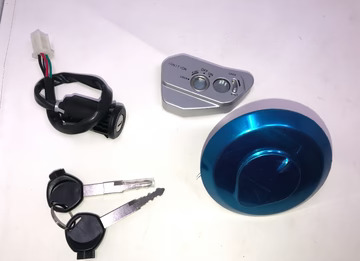Dental implants are one of the most transformative advancements in modern dentistry. Patients who once had to settle for bridges or removable dentures now have a long lasting solution that looks, feels, and functions like natural teeth. For dentists, offering implant treatments is more than just adding a new procedure, it’s an opportunity to expand their practice, improve patient satisfaction, and stay competitive in a rapidly evolving field.
But for many clinicians, the question remains: How do you become confident in both placing and restoring dental implants without years of trial and error? The answer lies in structured education programs that provide a complete roadmap, from surgical placement to prosthetic restoration.
Today, patients are more educated and proactive about their oral health than ever before. They understand the limitations of traditional solutions such as dentures, which can slip, affect speech, and accelerate bone loss. Dental implants, by contrast, preserve jawbone integrity, restore chewing function, and deliver a natural aesthetic.
For dentists, offering implants means not only meeting patient demand but also securing a practice’s future growth. Implant dentistry is one of the most profitable services in the industry, and dentists who master this skill often see a significant boost in both new patient acquisition and long term retention.
The Barriers to Learning Implant Dentistry
While the benefits are clear, many dentists hesitate to introduce implants into their practice. Common barriers include:
Surgical uncertainty: Without prior training, performing oral surgery can feel intimidating.
Restorative complexity: Understanding how implants integrate with crowns, bridges, or overdentures requires advanced knowledge.
Technology adoption: Digital tools like CBCT scans, guided surgery software, and intraoral scanners can seem overwhelming at first.
Fear of complications: Managing risk factors such as insufficient bone density or sinus involvement requires confidence and clinical experience.
Fortunately, these challenges can be overcome with the right educational program, one that combines theory, hands on experience, and mentorship.
Traditionally, dentists have either referred implant placement to specialists or focused only on the restorative phase. However, patients increasingly prefer receiving full treatment under one roof. Being able to both place and restore implants enhances patient trust and provides a seamless treatment experience.
A well structured implant education program should cover both aspects:
Patient evaluation and case selection
Anatomy of the jaw, bone density assessment, and nerve mapping
Flap design, incision techniques, and suturing
Guided surgery vs. freehand placement
Complication management and immediate implant placement
Impression techniques and digital scanning
Abutment selection and customization
Single crowns, bridges, and overdentures on implants
Occlusion management for implant supported restorations
Long term maintenance and patient education
By mastering both phases, dentists gain the confidence to deliver predictable, long lasting results.
Reading textbooks or attending lectures can provide foundational knowledge, but implant dentistry requires experience. Hands on training ensures that dentists don’t just understand theory but can apply it in real world situations.
This includes practicing incision design on models, learning flap management techniques, and performing actual implant placements on live patients under expert supervision. The goal is not only to learn the steps but also to gain confidence in handling unexpected challenges.
Not all implant training programs are created equal. To truly prepare dentists for success, a course should include:
Comprehensive curriculum covering both surgical and restorative aspects.
Live patient training for real world application.
Mentorship from experienced implantologists who provide guidance and feedback.
Integration of digital technology for modern workflows.
Ongoing support so dentists can continue to refine their skills after the course.
This approach allows dentists to return to their practice ready to immediately incorporate implants into their treatment offerings.
High Tech Dental Seminars: Your Path to Implant Confidence
For dentists looking to master both placement and restoration, High Tech Dental Seminars offers the ideal solution. Their dental certification programs provide a complete, hands on learning experience designed to transform clinicians into confident implant providers.
One of their most sought after courses focuses on dental implant training in Canada. This program emphasizes both the surgical and restorative phases of implantology, ensuring participants are fully prepared to provide comprehensive treatment to their patients. With live patient training, mentorship, and exposure to the latest digital technologies, dentists gain the real world experience needed to integrate implants seamlessly into their practice.
The Rewards of Adding Implants to Your Practice
Dentists who complete implant training often experience:
Higher case acceptance: Patients appreciate not being referred to multiple providers.
Increased revenue: Implants are one of the most profitable services in dentistry.
Professional growth: Expanding clinical skills boosts confidence and career satisfaction.
Stronger patient relationships: Patients value continuity of care and trust their dentist more when everything is handled in house.
Final Thoughts
Dental implants are no longer a niche service, they’re a cornerstone of modern dentistry. For dentists, the ability to confidently place and restore implants is not just a skill, but a pathway to greater professional success and improved patient outcomes.
With the right training program, you don’t need years of trial and error to gain confidence. A comprehensive course that blends theory, hands on practice, and mentorship can give you the tools to provide exceptional implant care in just one program.
High Tech Dental Seminars makes this possible by offering dentists a structured and proven way to master both surgical placement and restorative techniques. With their guidance, you can return to your practice fully prepared to deliver the transformative power of implants, and take your career to new heights.




Want to add a comment?